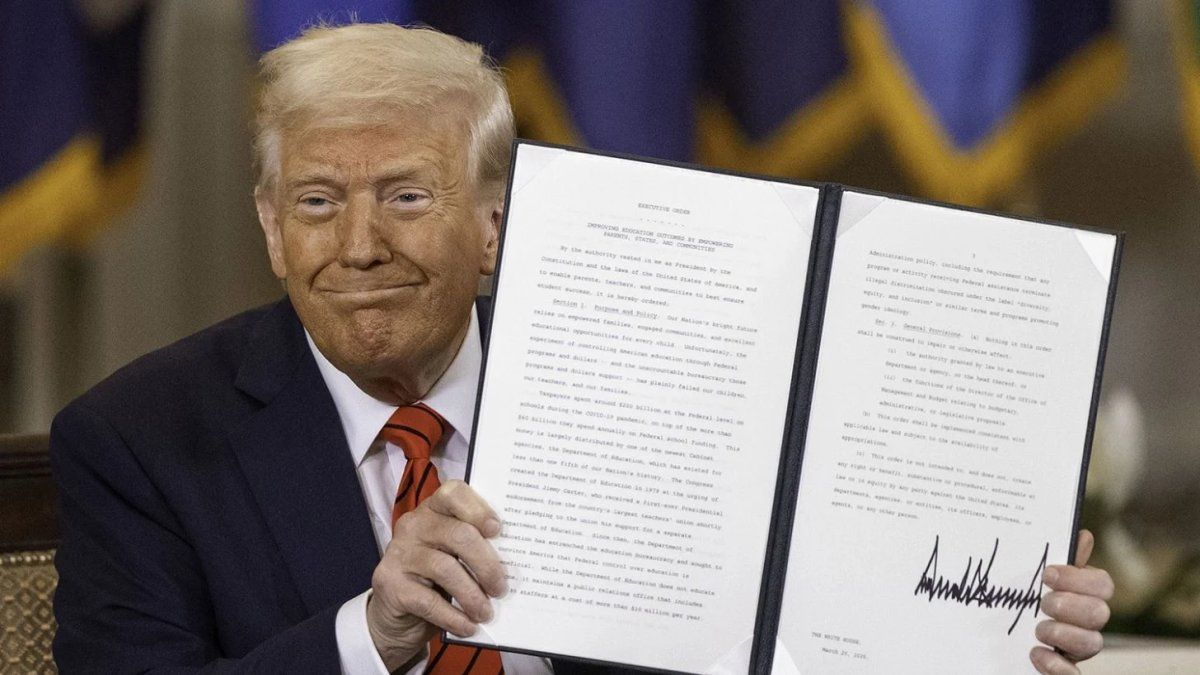After reaching an agreement with the United Kingdom, the United States will begin this weekend conversations with China. But Alec Phillips, chief political economist of Goldman Sachswarns that, Despite all the relaxes of distension, the markets are overlooking that the president has warned twice this week that the US could impose tariff increases on some of his main commercial partners.
“There will be a moment … in which we will simply make the agreement,” said President Donald Trump on Thursday from the Oval office after announcing the commercial agreement with the United Kingdom. “We do not need the country’s participation because we already had it. And we will say that this particular country will pay a 25%tariff, or 30%, or 50%, or 10%, or whatever.”
Phillips said that this means that some, if not the majority, of the commercial partners could soon face new threats of specific reciprocal tariffs per country, and that these higher rates could be imposed “at least some commercial partners.”
The United States maintains high trade deficits of goods with China, Canada, Mexico, Germany, Japan, South Korea, Ireland, Italy and Switzerland.
Futures of American actions
ES00 +0.23% They stopped on Friday after two days of increases. The S&P 500 SPX +0.58% It has risen 17% since its intra -dialy minimal in the beginning of April. It had only been 12 minutes from Jerome Powell’s press conference on Wednesday when, suddenly, I joined and said aloud: “What, what did he say?”
It was when the president of the Federal Reserve, even more indirectly than usual, warned – or implied – that, although many things could happen, there is a scenario in which Donald Trump’s tariffs could, in theory, delay the cuts of interest rates for a whole year.
Powell said it so convoluted that not even monetary markets seem to have noticed. After the press conference, I reviewed the data that the CME follows, and the projections of interest rates for April and May 2026 were practically in the same place as before the Fed meeting. Nothing to see here, continue to circulate.
What Powell said was that tariffs could cause a “delay … at least during, say, next year” in the progress of the Fed towards the fulfillment of its objectives. That would imply that there would be no more progress towards the goal of reducing inflation to 2%, and therefore – potentially – there would not be new feat cuts. This is only one of the possible scenarios, and Powell clarified that it depends on “how tariffs materialize.”
As Powell has repeated, both in Wednesday and during the last seven years, the Fed is guided by the data: they will not cut interest rates until the data shows that the US economy. UU. It is advancing towards the goal of lowering inflation to 2%.
Trump Jerome Powell (1) .jpg
The Fed, trapped between Trump’s data and commercial policy.
If you do not believe me, see the video here from the hour, 11 minutes and 27 seconds, starting with the question of Jonnelle Mars, by Bloomberg.
Nor can I trust monetary markets to know if I am right or not about this interpretation. A couple of years ago I saw one of these conferences where Powell practically lifted a sign that said “I will not cut the rates this year”, and even so, when I reviewed later, the monetary markets, the bond markets and all the analysts anticipated with enthusiasm multiple cuts. (They were wrong.) One would expect the markets to know what they do, right? Well, not so much.
The warning on tariffs and their possible impact on progress towards inflation was not the only remarkable moment of the Powell conference. As always, these Fed meetings are a kind of Kabuki theater: journalists pretend to ask important questions to go on camera and show off their bosses and mothers, and the president of the Fed pretends to answer them.
Source: Ambito




